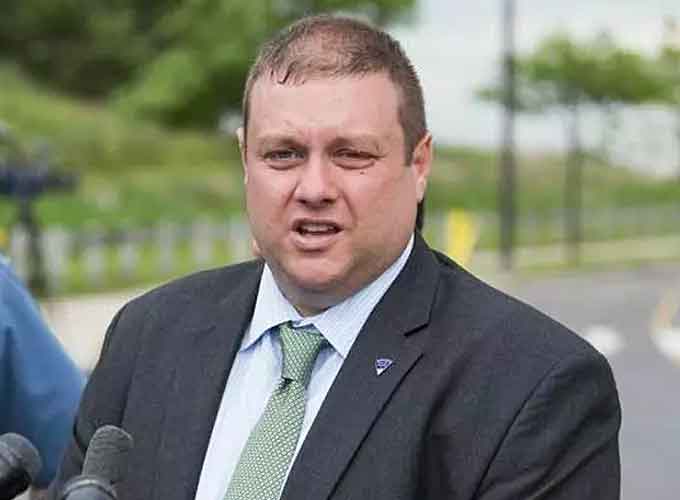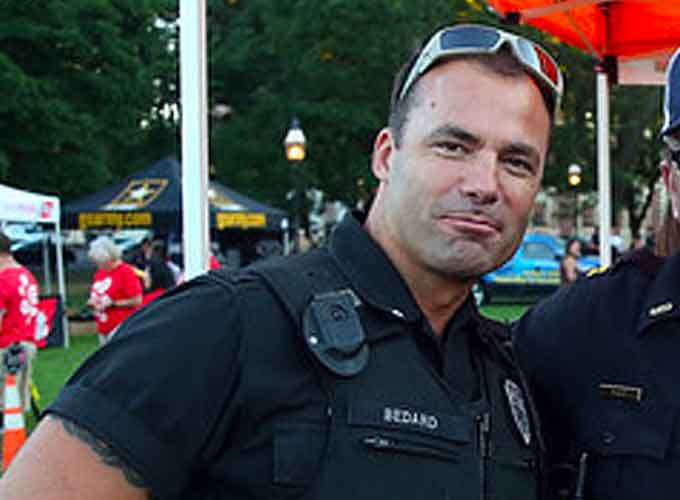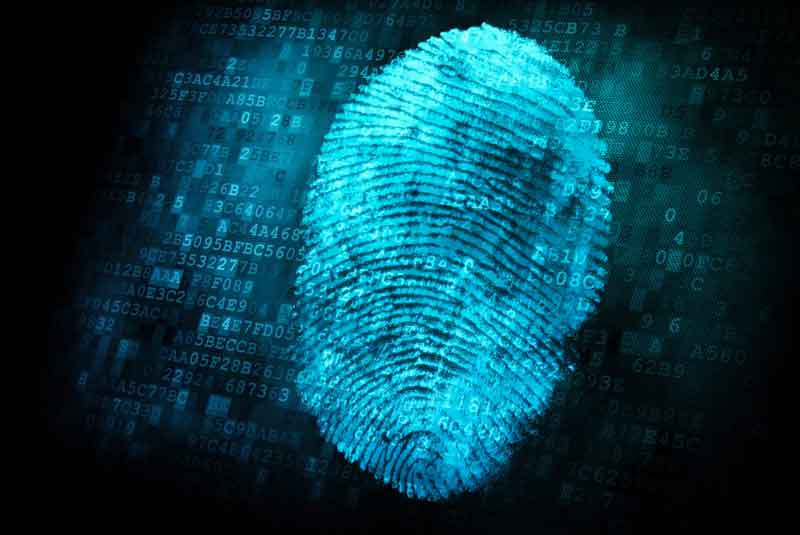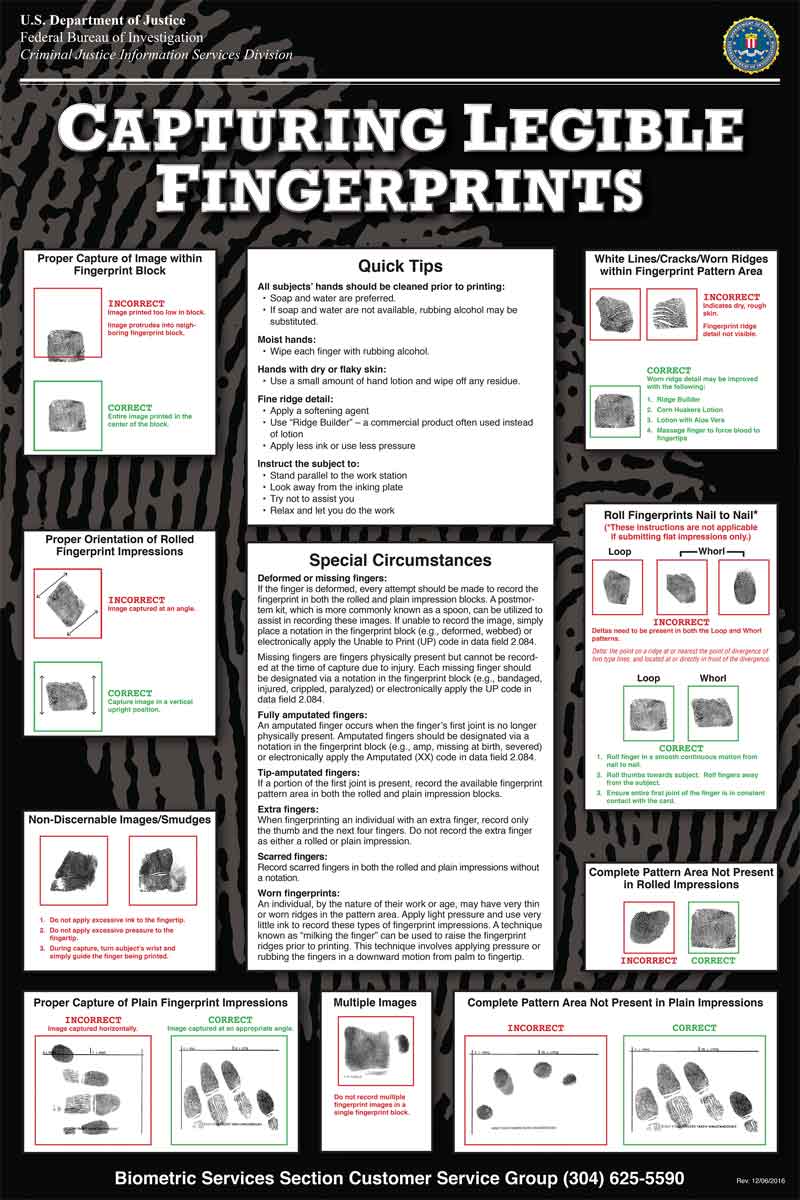
By Hillary Chabot, The Boston Herald and GOPUSA
The number of criminals trying to hide their identities by burning, hacking and mutilating their fingerprints is skyrocketing in the Bay State — and local law enforcement continues to see the number rise even as the FBI has targeted Massachusetts as an altered fingerprint hot spot.
Massachusetts State Police officials have identified 867 suspects arrested with deliberately altered fingerprints — most within the past few years. The first three cases were logged in 2002, and by 2010 only 72 arrests were recorded.

Year-by-year breakdowns were not available, but since 2010, police have made 795 altered-fingerprint arrests, according to state police spokesman David Procopio.
The FBI flagged the Bay State as ground zero for criminal fingerprint erasures after studying records of altered prints across the nation, finding that, “Massachusetts officials had the most encounters with individuals who had altered fingerprints,” according to a 2014 FBI report.
Those include arrests made by local police in Boston, Lawrence and other cities, as well as by state police.

“On the tip of every finger were scars damaging each print,” wrote Salem police officer James Bedard in a June 4 arrest report of a man that police were unable to properly identify.
“This officer is aware that criminals alter/destroy their fingerprints to avoid detection by Law Enforcement Agencies.”
Bedard arrested the man, who initially identified himself as Puerto Rican-native Emybel Perez Ortis. Law enforcement in Puerto Rico quickly debunked that identity.
“The information received comes back to a female with the same name, DOB and social security number who resides in Puerto Rico,” Bedard wrote.
Despite the altered fingerprints, an Automated Fingerprint Identification System was able to identify a trail of fake personas and drug busts connected to the suspect.
“A check of his numerous identities show a pattern of drug related offenses and crimes involving the US Marshalls, DEA and local law enforcement,” wrote Bedard, who charged the man with identity fraud as well as possession of a fake driver’s license.
Boston-area FBI officials began to keep an eye out for altered prints in 2014 after two doctors from the Dominican Republic were busted in two separate Massachusetts cases offering to surgically alter fingerprints of convicted criminals and illegal immigrants, said Kristen Setera, spokeswoman for the FBI’s Boston division.
Crime fighters across the country have far more advanced means of tracking identities, such as DNA and facial recognition, but they don’t always employ those measures for suspects arrested on smaller drug offenses, said William Shade, a fingerprint expert with more than 40 years of experience.
Those methods also require authorities to have access to the suspect’s previously identified DNA samples and facial images.
Meanwhile, Massachusetts State Police are seeking to combat the opioid crisis by keeping records of all altered fingerprint cases and investigate drug trafficking organizations under their new homeland security division, according to state officials.
The Bay State’s surge in altered fingerprints and identity theft comes as President Trump and his administration have blasted Massachusetts as a haven for drug dealers profiting from the opioid crisis — suggesting that drug dealers who are in the United States illegally seek the commonwealth’s so-called “sanctuary cities” for refuge.
“The sanctuary city of Lawrence, Massachusetts, is one of the primary sources of fentanyl in six New Hampshire counties,” said Trump at a March event in New Hampshire.
Original post http://www.bostonherald.com/news/local_coverage/2018/07/erasing_the_evidence_fbi_points_to_massachusetts_as_the_place_to_alter
Learn More…
FBI: Recording Legible Fingerprints

By the FBI
The FBI’s Next Generation Identification system is the largest biometric database of criminals in the world, and clear, legible fingerprints form the foundation of its master fingerprint file.
Agencies submitting fingerprints to the FBI should be aware of the proper procedures for recording fingerprints.
The following information will assist in obtaining fingerprints that meet Bureau standards.
Fingerprint Impression Types
Type 4
- Rolled impressions are the ten individually-taken fingerprint images rolled from nail to nail.
- The plain impressions are used to verify the sequence and accuracy of the rolled impressions.
Type 14
- Identification flat impressions are taken simultaneously without rolling.
- These are referred to as plain, slap, or flat impressions.
- The individual’s right and left four fingers should be captured first, followed by the two thumbs (4-4-2 method).
- Instituting this finger capture method ensures the highest level of fingerprint sequence accuracy.
Basic Fingerprint Equipment
Fingerprints can be recorded utilizing the following methods:
- Standard Fingerprint Card (e.g., FD-249 and FD-258)—Use ink to record fingerprint images on standard fingerprint cards.
- Live Scan—Fingerprint images can be submitted electronically using a live scan device. Electronic fingerprinting equipment should be properly maintained at all times.
- For a list of certified devices, please refer to the FBI Certified Products List at www.fbibiospecs.cjis.gov.
Fingerprinting Process
- The recommended height for recording legible fingerprints is approximately 39 inches from the floor.
- This allows the forearm of an average adult to be parallel with the floor.
- This is the recommended position to record fingerprints.
- Soap and water are preferred; however, rubbing alcohol may be substituted.
- If hands are moist, wipe each finger with rubbing alcohol. If hands are dry or flaky use a small amount of hand lotion and wipe off any residue.
- If capturing fingerprints electronically, ensure the live scan fingerprint device is properly calibrated and the platen is free of dust, dirt, and any residual fingerprint images.
- The individual’s hands should be cleaned prior to printing:
- Instruct the individual to look away from the fingerprint device, not to assist in the fingerprint process, and to relax.
- Grasp the individual’s right hand at the base of the thumb with your right hand.
- Cup your hand over the individual’s fingers, tucking under those fingers not being printed.
- Guide the finger being printed with your left hand.
- If using the ink and paper method, roll the finger on the inking plate or pad so the entire fingerprint pattern area is evenly covered with ink.
- The ink should cover from one edge of the nail to the other and from the crease of the first joint to the tip of the finger.
- Using the correct amount of ink is vital.
- When taking the rolled impression, the side of the finger bulb is placed upon the card or platen.
- The finger is then rolled to the other side until it faces the opposite direction.
- Care should be exercised so the bulb of each finger, from tip to below the first joint, is rolled evenly.
- Generally, the weight of the finger is the maximum pressure needed to clearly record a fingerprint.
- In order to take advantage of the natural movement of the forearm, the hand should be rotated from the more difficult position to the easiest position.
- This requires the thumbs be rolled toward and the fingers away from the center of the individual’s body.
- Roll each finger from nail to nail in the appropriate space, taking care to lift each finger up after rolling to avoid smudging.
- When using the ink and paper method and a rolled impression is not acceptable, you may use an adhesive retab to cover the fingerprint in its space.
- (Only two retabs can be applied to each fingerprint block.)
- For live scan, the image should be deleted and retaken.
- For a Type-4, plain impressions are typically printed last.
- The technician simultaneously presses the individual’s four fingers (of the right hand), keeping the fingers together on the surface of the card or live scan device (at a 45-degree angle) to capture all four fingers in the allotted space.
- Repeat this process for the left hand and then print both thumbs.
- Type-14 capture protocol requires the technician to simultaneously press the individual’s four fingers on the surface of the live scan device at a 90-degree vertical angle. Care should be taken to capture all fingers in the allotted space.
- Repeat this process for the left hand and then print both thumbs simultaneously (4-4-2 method).
- Capturing all fingers and thumbs in a vertical position improves finger segmentation software accuracy.
- Complete all required textual information. It is important to enter the appropriate data in all fields when known.

Special Circumstances
Deformed or missing fingers:
If the finger is deformed, every attempt should be made to record the fingerprint in both the rolled and plain impression blocks.
A postmortem kit, which is more commonly known as a spoon, can be utilized to assist in recording these images.
If unable to record the image, simply place a notation in the fingerprint block (e.g., deformed, webbed) or electronically apply the Unable to Print (UP) code in data field 2.084.
Missing fingers are fingers physically present but cannot be recorded at the time of capture due to injury.
Each missing finger should be designated via a notation in the fingerprint block (e.g., bandaged, injured, crippled, paralyzed) or electronically apply the UP code in data field 2.084.
Fully amputated fingers:
An amputated finger occurs when the finger’s first joint is no longer physically present.
Amputated fingers should be designated via a notation in the fingerprint block (e.g., amp, missing at birth, severed) or electronically apply the Amputated (XX) code in data field 2.084.
Tip-amputated fingers:
If a portion of the first joint is present, record the available fingerprint pattern area in both the rolled and plain impression blocks.
Extra fingers:
When fingerprinting an individual with an extra finger, record only the thumb and the next four fingers. Do not record the extra finger as either a rolled or plain impression.
Scarred fingers:
Record scarred fingers in both the rolled and plain impressions without a notation.
Worn fingerprints:
An individual, by the nature of their work or age, may have very thin or worn ridges in the pattern area.
Apply light pressure and use very little ink to record these types of fingerprint impressions. A technique known as “milking the finger” can be used to raise the fingerprint ridges prior to printing.
This technique involves applying pressure or rubbing the fingers in a downward motion from palm to fingertip.

















